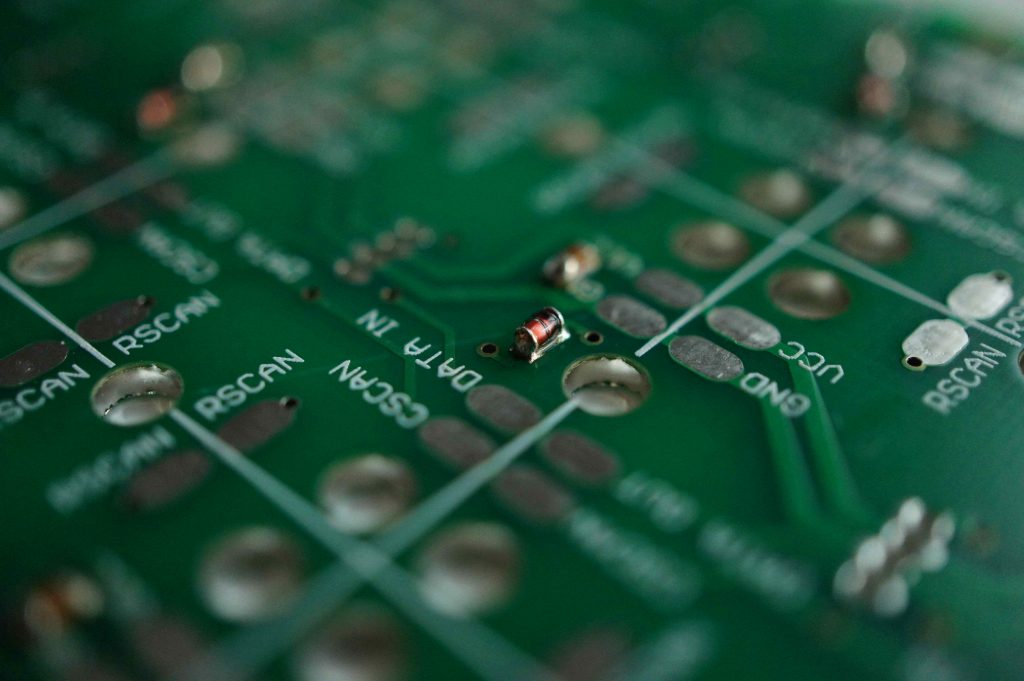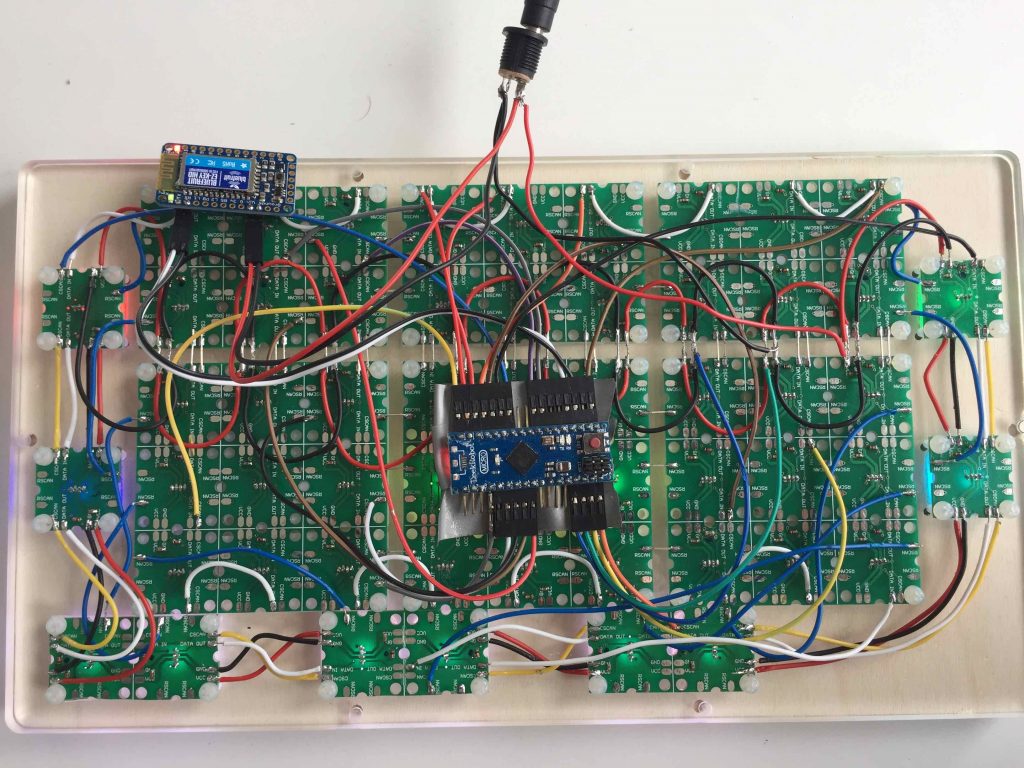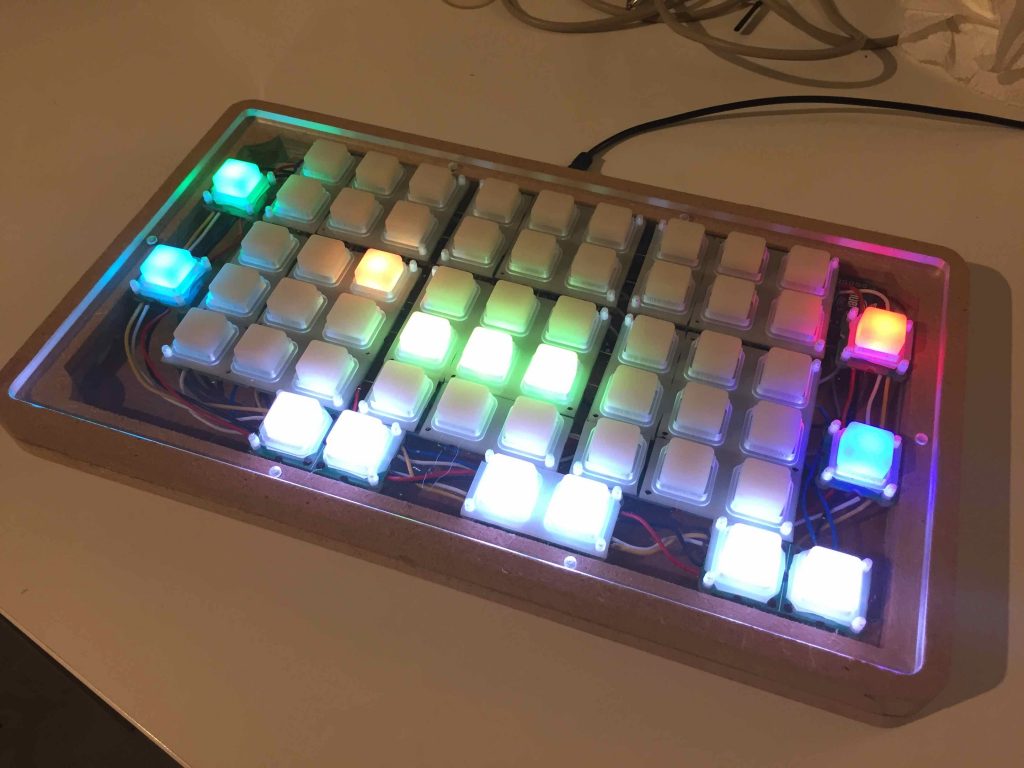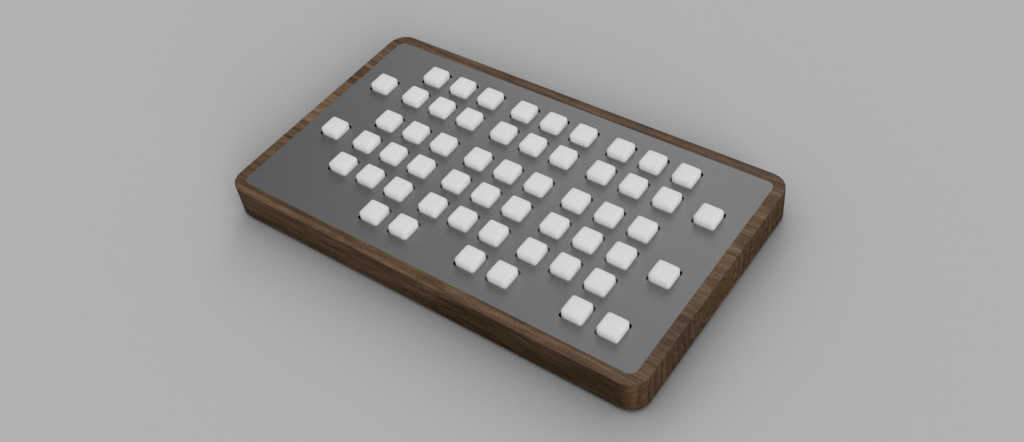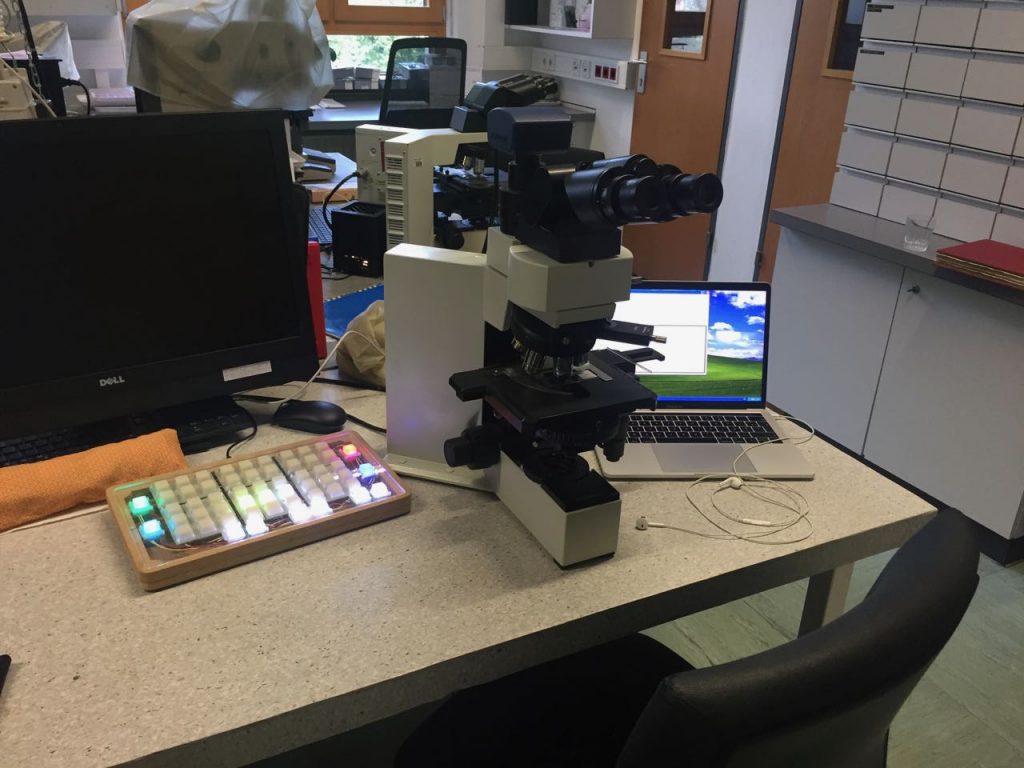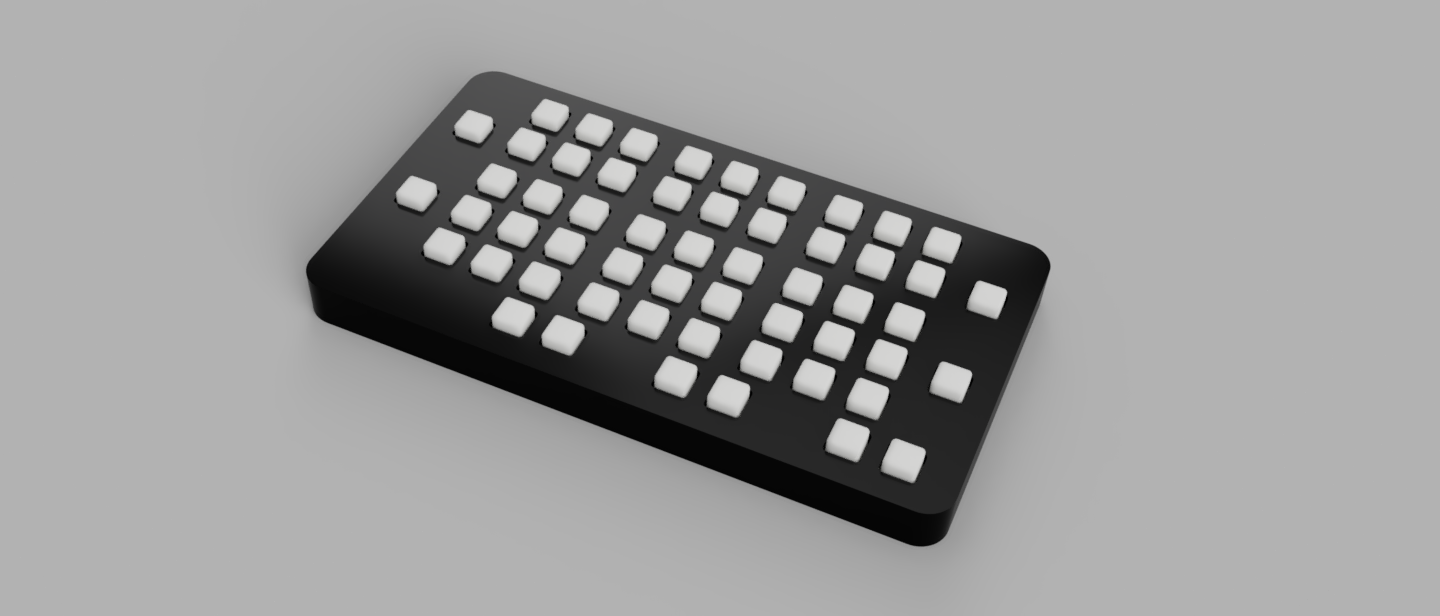JoliKeyboard 2
I have been working during year 2020 (It Which Cannot Be Named) on a new version of JoliKeyboard. I called it very originally JoliKeyboard 2. There are three main differences in comparison with the first JoliKeyboard.
- JoliKeyboard 2 has a single electronic board (aka PCB). Instead of soldering manually 55 repeated elements, wires are embodied directly on the PCB. Components such as the processor and Bluetooth chip are soldered on the board too.
- The case is 3D-printed. It’s a puzzle of four parts but it’s a single material, and it is designed to make JoliKeyboard repairable. 3D-printing also makes production easier than milling.
- JoliKeyboard 2 is powered by USB-C. USB-C offers to both deliver enough power for JoliKeyboard 2 and load/update the processor software.
Animation and breakdown of JoliKeyboard 2
There a few other enhancements: JoliKeyboard 2 is a bit smaller in size, so it will fit better in small working labs, and it has two LEDs to assess the power and Bluetooth statuses, in order to assess what’s going on if something should be wrong (but that has never happened so far).
JoliKeyboard (Original)
JoliKeyboard is an important project of mine. It is a custom ergonomic keyboard designed to work with PolyCounter, free counting software by Takeshi Nakagawa.
JoliKeyboard is fully compatible with PolyCounter, and offers additional functionalities such as a Redo key, and a Tab key for fast-switching between multiple instances of PolyCounter.
It features soft silicon keys with LED backlighting for easy finger positioning. It runs with DC power but connects to your computer via Bluetooth.
JoliKeyboard is a (fully working!) prototype, but you are welcome to show your interest.
JoliKeyboard has been made possible thanks to Julien Maire who designed the electronic board, and to Mélanie Rouget who supervised the 3D-modelling. Thanks also to Jan for his great help.
Oh, and did you know that JoliKeyboard actually owes its name to Daniela Festi?
JoliKeyboard is 33-cm long, 19-cm large, and 2.5-cm high. Not much bigger than a standard computer keyboard, finally.
